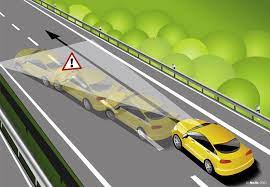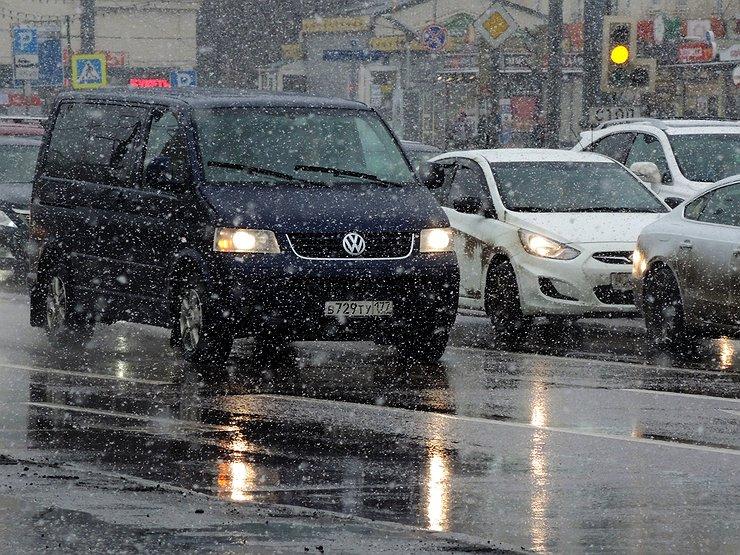
How Lane Keeping Assist Works
Content
Nowadays, automakers are increasingly using various technologies that greatly simplify the operation of vehicles. Recent innovations include a semi-automatic and automatic vehicle control interface. Now these are prototypes that are being actively implemented in some models of both premium and mass segments. To understand what advantages a driver gets when installing a lane control system in his vehicle, it is necessary to understand the principle of operation, main functions, advantages and disadvantages of such equipment.
What is lane keeping control
System original name Lane Departure Warning System (LDWS), which translated into Russian sounds like "Lane Departure Warning System". This software and hardware tool allows you to receive a timely signal that the driver has left the lane: drove to the side of oncoming traffic or beyond the boundaries of the roadway.
First of all, the use of such a system is aimed at drivers who have been driving for a long time and may, due to drowsiness or lack of attention, deviate from the main traffic flow. By sending signals through steering wheel vibration and sound, the interface prevents accidents and prevents unauthorized driving off the road.
Previously, such equipment was installed mainly in premium sedans. But now more and more often you can find the system in budget or family cars that seek to improve traffic safety.
System purpose
The main function of the lane-keeping assistant is to prevent possible accidents by helping the driver maintain the direction of travel in the selected lane. The effectiveness of this system is justified on federal roads with road markings applied to them.
Among other functions of the Lane Keeping Assist, the following options are implemented:
- warning by various indicators, including vibration of the steering wheel, the driver about violation of the lane boundaries;
- correction of the established trajectory;
- visualization of the interface operation with constant informing the driver on the dashboard;
- recognition of the trajectory along which the vehicle is moving.
With the help of a camera, which is equipped with a photosensitive matrix and is installed on the front of the car, the situation is filmed and transmitted in a monochrome image to the electronic control unit. There it is analyzed and processed for later use by the interface.
What are the elements of LDWS
The system consists of the following components:
- Control key - launches the interface. Located on the center console, dashboard or turn signal arm.
- Camcorder - captures the image in front of the car and digitizes it. Typically located behind the rearview mirror on the windshield in an integrated control unit.
- Electronic control unit.
- Steering column switch - informs the system about a controlled lane change (for example, when changing lanes).
- Actuators are elements that notify about deviation from the specified route and out of bounds. They can be represented by: an electromechanical power steering (if necessary to correct the movement), a vibration motor on the steering wheel, a sound signal and a warning lamp on the dashboard.
For the full operation of the system, the obtained image is not enough, so the developers have included a number of sensors for a more accurate interpretation of the data:
- IR sensors - perform the function of recognizing road markings at night using radiation in the infrared spectrum. They are located in the lower part of the car body.
- Laser sensors - have the principle of operation, like that of IR devices, projecting clear lines on the specified route, for subsequent processing by special algorithms. Most often located in the front bumper or radiator grille.
- Video Sensor - Works the same as a regular DVR. Located on the windshield behind the rearview mirror.
Principle of operation
When equipping modern vehicles, several types of traffic control systems for a given lane are used. However, their principle of operation is the same and consists in keeping traffic in the selected lane of the motorway. The trajectory can be set by sensors that are located inside the cabin in the upper central part of the windshield or outside the car: on the bottom, radiator or bumper. The system starts working at a certain speed - about 55 km / h.
Traffic control is carried out in the following way: sensors receive up-to-date data on road markings in real time. The information is transmitted to the control unit, and there, by means of processing with special program codes and algorithms, it is interpreted for further use. If the car leaves the selected lane or the driver decides to change lanes without turning on the turn signal, the interface will regard this as an unauthorized action. Depending on the type of LDWS installed, notifications may differ, such as steering wheel vibration, sound or light signals, etc.
Among the latest developments in this area are functions that take into account possible complex maneuvers on the way of movement, in accordance with navigation maps. So, the latest models of Cadillac cars are equipped with interfaces with data for a given route about the necessary maneuvers, including turns, lane departure or lane changes, etc.
Application of lane control systems by different car manufacturers
Modern systems are developed on the basis of two main types of technologies:
- worksheets (Lane Keeping System) - is able to take the necessary actions to return the car to the lane, regardless of the driver, if he does not respond to external signals and warnings.
- LDS (Lane Departure System) – notifies the driver of the vehicle leaving the lane.
The table below shows the names of the systems and the corresponding car brands in which they are used.
| System name | Car brands | |
| Monitoring system | Toyota | |
| Keeping | Support System | Nissan |
| Assist | Mercedes-Benz | |
| Aid | Ford | |
| Keep Assist System | Fiat and Honda | |
| Departure | Prevention | Infiniti |
| Warning System | Volvo, Opel, General Motors, Kia, Citroen and BMW | |
| Assist | SEAT, Volkswagen and Audi | |
Advantages and disadvantages
The equipment has a number of advantages:
- At high speeds, data processing accuracy is increased with complete control of vehicle movement.
- The ability to monitor the state in which the driver of the car is.
- The driver can "communicate" in real time with the system that monitors the situation around the car. Possibility to switch to full control or partial steering mode. This is achieved by recognizing pedestrians, road signs and activating the emergency braking function.
Due to the fact that the interface is mostly at the stage of development and adaptation to real conditions, it has not only advantages, but also a number of disadvantages:
- For the correct operation of all mechanisms of the system, the roadway must be flat with clear markings. Deactivation of the interface occurs due to contamination of the coating, lack of marking or constant interruption of the pattern.
- Control is deteriorating due to a decrease in the level of recognition of lane markings in narrow lanes, which leads to the transition of the system to a passive mode with subsequent deactivation.
- The lane departure warning only works on specially prepared roadways or autobahns, which are equipped according to existing standards.
Interfaces LDWS Are unique systems that help the driver to follow one of the selected lanes on the Autobahn. Such technical support of the car significantly reduces the accident rate, which is especially important when driving for a long time. In addition to the visible advantages, the lane control system has one significant drawback - the ability to work only on those roads that are equipped according to existing standards and with clearly marked markings.

